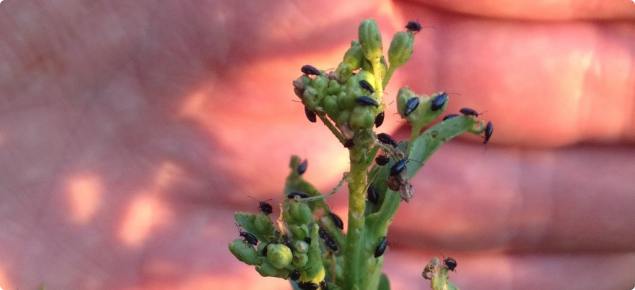What plants are affected?
Radish flea beetle (Phyllotreta chotanica Duvivier 1892) feeds on cruciferous crops such as cauliflower, cabbage, cress, bok choy, broccoli and Brussel sprouts.
In September 2014, the beetle was found feeding on the leaves of mizuna and bok choy in a private garden in Kununurra.
Few cruciferous crops are grown commercially in Kununurra.
What do I look for?
Radish flea beetle is a small metallic blue beetle approximately 2-3mm in length. From a review of current literature and internet sources, little is known about its pest status or biology.
What damage does this pest cause?
Seedlings can be severely damaged and riddled with holes that enlarge as the plants grow. Larvae feed on the roots of host plants.
At this stage, focus is on determining the distribution of the beetle and any levels of damage caused.
Industry impact
There is limited information about the beetle including its economic importance - except the beetle was a major pest in winter 2009 on organic farms in Taiwan.
Following the September 2014 detection, the Department of Agriculture and Food, Western Australia (DAFWA) treated the affected plants and surrounding soil.
Further survey work was curtailed due to the onset of the wet season and lack of host crops. DAFWA surveys for the beetle recommenced at the beginning of the 2015 dry season when new host crops were available. The beetle was found again in the same private garden, as well as one that adjoins it.
Further survey work in the Kununurra area is being undertaken by DAFWA.
What do I do if I find it?
Growers of cruciferous crops should contact DAFWA’s Pest and Disease Information Service (PaDIS) if they suspect radish flea beetle. Contact PaDIS at the contact details below.

